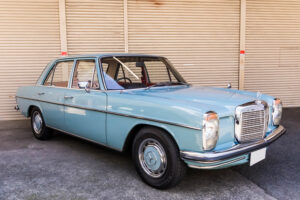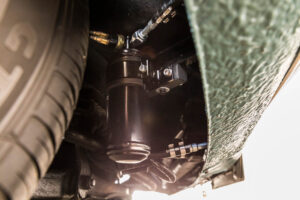Electric cooler kits for old and obscure car models
With global warming becoming more severe yearly, summer driving in an old car without an air-conditioner is hell. Even if you wanted to install a retrofit cooler, it was difficult because of the engine’s inability or physical restrictions. Recently, however, an ‘electric cooler kit’ has appeared that can be easily installed in compact cars and vehicles with special layouts, and has become a hot topic in the old car community. What makes them different from conventional cooler kits?
The compressor is not engine-driven but battery-driven
Originally, car coolers used the output of the engine to drive a compressor, which compressed refrigerant gas (CFC gas in the old days) and used the heat of vaporization of this refrigerant gas as it returned to gas to cool the car interior. This mechanism was already established in the USA before World War II and basically still works in exactly the same way.
Until around the 1970s, however, car coolers were often treated as an option, and not all cars were fitted with coolers, as is the case today, with most mass and light cars being cooler-free for a long time.
Therefore, many owners of old domestic cars installed retrofit cooler kits that were set up for each car model, but there were problems such as installation being difficult due to space issues in the engine compartment, and minor car models not being made into kits in the first place.
This is where electric compressor cooler kits have recently attracted attention. The main feature is that the compressor is driven by electric power instead of using the engine’s output.
Other than that, the kit includes a condenser that cools the refrigerant with ambient air, an evaporator with an air outlet and blower fan inside the vehicle, a receiver tank, and hoses to connect them. There is no need to create brackets or pulleys for each vehicle model, and the system can be installed as long as there is space for the compressor and other components.




































